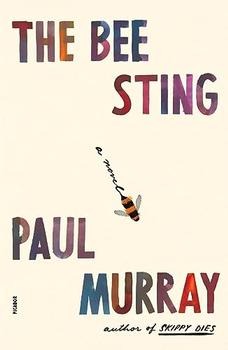Summary | Excerpt | Reviews | Beyond the Book | Read-Alikes | Genres & Themes | Author Bio

A Novel
by Paul MurrayThis article relates to The Bee Sting
 In Paul Murray's novel The Bee Sting, Dickie Barnes is the reluctant owner of a failing Volkswagen dealership. One character provokes Dickie's teenage daughter Cass by telling her that Volkswagen was started by the Nazis, so it's no great loss if the dealership shuts down. And it's true that even though these days Volkswagen might be best known as the developer of iconic vehicles like the Beetle, the Rabbit, and the VW Bus, or as the originator of the 1990s "Fahrvergnügen" advertising campaign, the company did indeed get its start as a project of the German government under the control of the National Socialist Party.
In Paul Murray's novel The Bee Sting, Dickie Barnes is the reluctant owner of a failing Volkswagen dealership. One character provokes Dickie's teenage daughter Cass by telling her that Volkswagen was started by the Nazis, so it's no great loss if the dealership shuts down. And it's true that even though these days Volkswagen might be best known as the developer of iconic vehicles like the Beetle, the Rabbit, and the VW Bus, or as the originator of the 1990s "Fahrvergnügen" advertising campaign, the company did indeed get its start as a project of the German government under the control of the National Socialist Party.
Volkswagen was founded in 1937 as Gesellschaft zur Vorbereitung des Deutschen Volkswagens mbH, soon renamed simply Volkswagenwerk ("The People's Car Company") and operated by the German Labor Front, the Nazis' national labor organization. Adolf Hitler had ambitious plans for developing an extensive automobile infrastructure in the country, and part of those aspirations included mass-producing an affordable automobile that could be owned by the average German family, hence, the "people's car." Propaganda minister Joseph Goebbels presented a vision of "a happy people in a country full of blossoming beauty, traversed by the silver ribbons of wide roads, which are open to the modest car for the small man." Austrian engineer Ferdinand Porsche, already known for founding his own automobile company, was enlisted, along with his son, to help develop the early VW designs.
A whole town (then known as Stadt der Kdf-Wagen, or "City of the KdF Car," but since renamed Wolfsburg) was established to support the massive Volkswagen factory and house its workers. But the start of World War II in 1939 halted further development of the company's vehicles for the civilian market. Instead, the factory went into military production, during which time the facility became one of the largest sites of forced labor in the Third Reich, in large part because the fledgling company had not yet established its own civilian workforce. Soviet prisoners of war, concentration camp inmates (including Jews), and Soviet and Polish forced civilian laborers eventually made up 60% of the factory's workforce. Most tragically, hundreds of infants born to the women workers were taken into custody in the company's Kinderheim, where the children received inhumane treatment and were essentially neglected and left to starve to death.
After the end of the war, trusteeship of the Volkswagen plant was transferred to the British, and the rehabilitation of the company as a civilian manufacturer became a major part of the Allies' postwar economic recovery strategy, although consumers in the United States were initially reluctant to adopt the company's models due to their historical associations. In keeping with Germany's ongoing reckoning with its historical atrocities, the VW headquarters in Wolfsburg contains an exhibit acknowledging the company's checkered past, including oral histories by those forced to work there. Many of these witnesses' stories can also be heard on the company's website.
Photo of Volkswagen's Type 82 utility vehicle used by German forces during World War II, via Wikimedia Commons (CC BY-SA 3.0)
Filed under People, Eras & Events
![]() This article relates to The Bee Sting.
It first ran in the August 2, 2023
issue of BookBrowse Recommends.
This article relates to The Bee Sting.
It first ran in the August 2, 2023
issue of BookBrowse Recommends.
Your guide toexceptional books
BookBrowse seeks out and recommends the best in contemporary fiction and nonfiction—books that not only engage and entertain but also deepen our understanding of ourselves and the world around us.